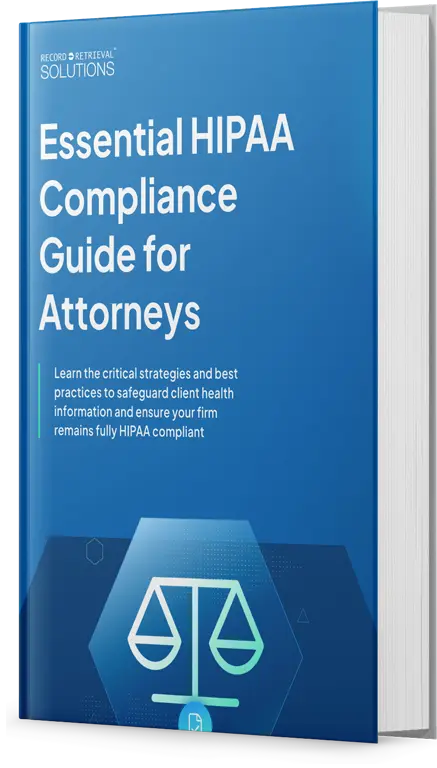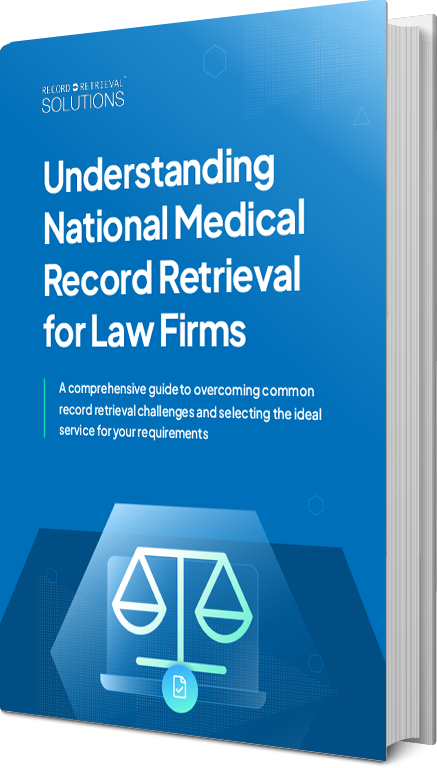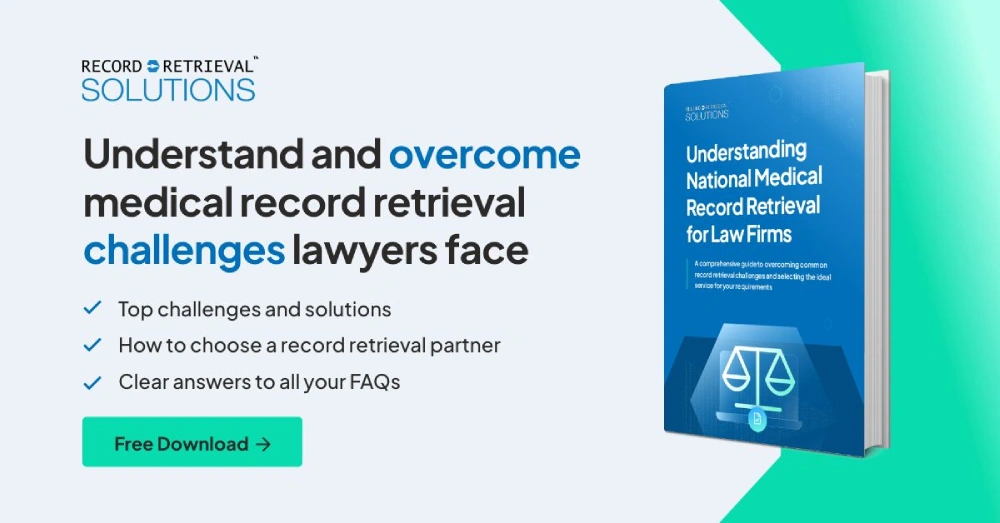In the legal realm, particularly for mass tort attorneys, safeguarding sensitive client data is paramount. With the advent of blockchain technology, there’s a revolutionary way to enhance data security and streamline case management processes. Let’s delve into how blockchain can be a game-changer for mass tort attorneys.
Understanding Blockchain In Simple Terms
At its core, blockchain is a decentralized digital ledger that securely stores data across a network of computers. Each block in the chain contains transaction records and is linked to the previous block, creating a secure, tamper-proof sequence. For mass tort attorneys, this technology offers a robust solution for managing sensitive client data, protected from unauthorized access. Blockchain’s encryption technology adds an extra layer of security, making data breaches exceedingly difficult.
Why Use Blockchain in Mass Tort Case Data Storage?
Decentralized Data Storage
Decentralized data storage on the blockchain represents a transformative shift from traditional centralized data management systems. In a decentralized blockchain network, data is distributed across numerous nodes or computers, rather than being stored in a single location or server. This distribution ensures that no single entity has complete control over the data, significantly enhancing data security and resilience. By spreading data across a wide network, blockchain minimizes the risk of data breaches, cyber-attacks, and data loss due to hardware failures or natural disasters. Each node in the network holds a copy of the blockchain, ensuring that the data is redundantly stored and can be retrieved even if parts of the network are compromised or go offline.
Moreover, decentralized data storage facilitates a higher degree of transparency and auditability. Every transaction or data change on the blockchain is recorded in a tamper-evident ledger and is visible to all participants, subject to privacy controls. This feature not only deters fraudulent activities but also promotes trust among users by providing a clear, immutable history of data transactions. In applications such as mass tort cases, where the integrity of evidence is paramount, the blockchain’s decentralized storage offers a robust solution that safeguards data against unauthorized alterations and ensures that digital evidence remains unassailable throughout the legal process.
Smart Contracts
Smart contracts in blockchain technology offer a groundbreaking approach to automating and enforcing the legal and logistical aspects of medical record retrieval. Essentially, smart contracts are self-executing contracts with the terms of the agreement directly written into lines of code. These contracts automatically perform actions such as granting access, transferring data, or even triggering payments once predefined conditions are met, without the need for intermediaries. In the context of medical record retrieval, smart contracts can revolutionize how requests are processed and fulfilled. For instance, they can automate the verification process for requests, ensuring that only authorized individuals or entities gain access to specific medical records. This not only speeds up the retrieval process but also adds a layer of security and compliance by adhering strictly to the terms coded into the contract.

Furthermore, smart contracts can streamline communication and transactions between healthcare providers, patients, and third parties, such as insurance companies or law firms, involved in the retrieval process. By utilizing blockchain’s secure and transparent nature, all parties can have real-time access to the status of requests and any associated transactions, fostering trust and efficiency. The immutable record of actions taken by the smart contract also provides an auditable trail, crucial for compliance and dispute resolution. This aspect is particularly valuable in sensitive areas like healthcare, where the integrity of the process and data is paramount. Ultimately, the adoption of smart contracts in medical record retrieval could lead to more efficient healthcare administration, reducing administrative burdens and allowing healthcare professionals to focus more on patient care rather than paperwork.
Enhanced Data Security and Immutability
Enhanced data security and immutability are cornerstone features of blockchain technology, especially crucial in the context of medical record retrieval solutions. Blockchain’s architecture inherently protects data through its decentralized nature and cryptographic hash functions, ensuring that once a record is entered into the blockchain, it cannot be altered or deleted without consensus from the network. This immutability guarantees the integrity of medical records, making blockchain an ideal platform for securely storing and sharing sensitive patient information. Furthermore, the use of encryption and secure key management practices within blockchain networks ensures that medical records are accessible only to authorized parties. This level of security and data integrity is particularly important in healthcare, where the accuracy and confidentiality of patient information are paramount, and any tampering or unauthorized access could have serious implications for patient privacy and care.
Moreover, blockchain’s enhanced data security and immutability provide a solid foundation for building trust among all stakeholders in the healthcare ecosystem, including patients, healthcare providers, insurers, and legal entities. For instance, in medical record retrieval, blockchain can facilitate secure, transparent, and efficient sharing of health records across different healthcare institutions and with authorized third parties, eliminating the risk of data breaches common in more traditional digital storage solutions. This trust is further bolstered by blockchain’s auditability feature, which allows for transparent tracking of who accessed what information and when, providing a clear audit trail that is essential for compliance with health information privacy regulations such as HIPAA. By leveraging blockchain’s secure and immutable record-keeping capabilities, medical record retrieval solutions can significantly improve the protection of patient data, streamline healthcare operations, and enhance the overall quality of patient care.
Streamlined Client Communication and Engagement
Streamlined client communication and engagement facilitated by blockchain technology marks a transformative shift in how legal and healthcare professionals interact with their clients. Blockchain platforms can host secure client portals that provide patients or clients with real-time access to their case information, updates, and medical records. This level of transparency not only empowers clients by giving them direct insight into their case progress but also fosters a deeper trust in the attorney-client or doctor-patient relationship. The immediacy and security of information exchange through blockchain eliminate traditional communication barriers, ensuring that clients are always informed and engaged in their cases or healthcare management.

Furthermore, blockchain enables the automation of routine updates and notifications through smart contracts, significantly enhancing client service efficiency. For example, clients can automatically receive updates when a new document is added to their file or when a significant case milestone is reached, without the need for manual intervention from staff. This automation not only optimizes operational efficiency, allowing professionals to allocate more time to high-value tasks, but also improves client satisfaction by ensuring they feel continuously informed and valued. In the legal and healthcare sectors, where timely and accurate information can significantly impact outcomes, blockchain’s ability to streamline communication and engagement stands out as a critical innovation, driving more responsive, client-centered services.
Potential Challenges and Considerations
Lack of Standardization
The lack of standardization in blockchain technology presents a significant challenge, particularly as its applications expand across various sectors, including finance, healthcare, and legal industries. This absence of uniform protocols and standards leads to a fragmented ecosystem where interoperability between different blockchain systems can be complex and inefficient. For organizations and professionals relying on blockchain for secure data management and transactions, this means navigating a landscape where platforms may have differing levels of security, privacy controls, and functionality. Such variability can complicate the selection of the most appropriate blockchain solution that meets specific operational needs and regulatory compliance requirements.
Moreover, the lack of standardization can hinder the widespread adoption of blockchain technology. Without common standards, developing solutions that can easily communicate and exchange data across different blockchain networks is challenging, limiting the technology’s potential for broader application and innovation. For sectors like healthcare and law, where the secure and efficient exchange of information is crucial, establishing interoperability standards is essential to fully leverage blockchain’s benefits. Addressing this issue requires concerted efforts from industry leaders, regulatory bodies, and technology developers to collaborate on developing universal standards that ensure compatibility, security, and ease of use across different blockchain platforms, paving the way for more seamless integration and utilization of this transformative technology.
Regulatory Uncertainty
Regulatory uncertainty stands as a significant challenge in the adoption and implementation of blockchain technology across various sectors. As a relatively new and rapidly evolving technology, blockchain operates in a legal and regulatory gray area in many jurisdictions. This uncertainty stems from the absence of specific laws and regulations that directly address the unique aspects of blockchain, such as decentralization, immutability, and smart contracts. For industries like healthcare, finance, and legal services, which are heavily regulated, navigating this uncertain regulatory landscape can be daunting. Organizations and professionals in these fields must balance the innovative potential of blockchain with the need to comply with existing laws and regulations that may not fully accommodate the technology’s novel characteristics.
This regulatory ambiguity can also stifle innovation and investment in blockchain projects due to concerns over future legal compliance and potential liability issues. As governments and regulatory bodies worldwide begin to recognize the importance and impact of blockchain, there is a growing need for clear, comprehensive regulatory frameworks that provide guidance on the use of blockchain while ensuring data privacy, security, and consumer protection. Developing these frameworks requires a deep understanding of the technology, its applications, and its implications for society and the economy. Until such regulatory clarity is achieved, organizations looking to leverage blockchain technology must remain agile, prepared to adapt their operations and strategies in response to evolving legal requirements and standards.
Scalability Issues
Scalability issues present a significant hurdle for blockchain technology, particularly as it gains traction across various industries demanding high transaction throughput and data volume. The inherent design of many blockchain systems, which prioritizes security and decentralization, can lead to bottlenecks in processing speed and transaction capacity. For instance, public blockchains like Bitcoin and Ethereum, while secure and decentralized, can process only a limited number of transactions per second compared to traditional centralized databases. This limitation poses challenges for mass adoption in sectors like finance, healthcare, and supply chain management, where the ability to handle vast amounts of data swiftly and efficiently is crucial.
Furthermore, the scalability challenge is compounded by the increasing size of the blockchain. As more blocks are added, the ledger grows, requiring more storage and processing power from network participants. This can lead to increased operational costs and may deter smaller participants, potentially centralizing the network over time. Various solutions have been proposed and are in development to address these issues, including off-chain transactions, sharding, and layer two protocols, which aim to increase throughput without compromising the core principles of blockchain technology. However, the effectiveness and adoption of these solutions remain in progress, and scalability continues to be a critical area of focus for developers and industry stakeholders aiming to realize blockchain’s full potential.
Integration With Existing Systems
Integrating blockchain technology with existing systems poses a significant challenge, mainly due to the fundamental differences in architecture and operation between traditional databases and blockchain networks. Many organizations operate on legacy systems that are centralized, while blockchain is inherently decentralized and operates on a consensus mechanism among all participants. Bridging this gap requires thoughtful planning, significant technical effort, and often substantial financial investment. For instance, integrating blockchain into existing financial, legal, or healthcare record-keeping systems not only involves technical compatibility issues but also necessitates a reevaluation of data governance, security protocols, and operational workflows to accommodate the decentralized nature of blockchain.

Moreover, achieving seamless integration demands a high degree of interoperability between the blockchain solution and the organization’s existing IT infrastructure. This includes compatibility with current software applications, compliance with data privacy regulations, and the ability to support the data volume and transaction speeds required by the organization’s operations. The integration process may also reveal the need for staff training and a cultural shift within the organization to adapt to the new technology. Despite these challenges, successful integration can offer substantial benefits, including enhanced data security, improved efficiency through automation, and greater transparency in transactions. As blockchain technology matures and industry-specific solutions emerge, tools and frameworks designed to facilitate integration with existing systems are becoming increasingly available, paving the way for broader adoption of blockchain across various sectors.
Additional Considerations for Implementation
Thorough Research and Expert Consultation
When considering the implementation of blockchain technology, conducting thorough research and seeking expert consultation are critical steps that cannot be overlooked. Blockchain’s complexity and its implications for an organization’s data management and security processes necessitate a deep understanding of the technology itself, as well as the specific challenges and opportunities it presents within the context of the industry. Thorough research involves not only a technical evaluation of blockchain platforms and their compatibility with existing systems but also an analysis of the potential legal, regulatory, and operational impacts. This exploration should encompass case studies and examples of successful blockchain implementations in similar settings, offering insights into best practices and common pitfalls.
Expert consultation plays an indispensable role in navigating the intricate landscape of blockchain adoption. Specialists in blockchain technology can provide valuable perspectives on selecting the most appropriate and effective blockchain solution for the organization’s needs. Additionally, legal experts with experience in the regulatory aspects of blockchain can offer guidance on compliance issues, helping to mitigate risks associated with evolving legal frameworks. Consulting with industry peers who have undertaken similar blockchain projects can also shed light on practical considerations, such as change management strategies and the integration of blockchain into existing workflows. By combining in-depth research with expert advice, organizations can make informed decisions that align with their strategic goals, ensuring a successful blockchain implementation that enhances operational efficiency and security.
Data Privacy Considerations
Data privacy considerations are paramount when implementing blockchain technology, especially in sectors handling sensitive information like healthcare, finance, and legal services. Blockchain’s transparency and immutability, while beneficial for security and accountability, pose unique challenges to data privacy. For instance, once data is recorded on a blockchain, it becomes difficult, if not impossible, to alter or delete, potentially conflicting with privacy regulations such as the General Data Protection Regulation (GDPR), which includes the right to erasure or “the right to be forgotten.”
To navigate these challenges, organizations must adopt measures that ensure data privacy while leveraging blockchain’s benefits. This includes the use of encryption to protect data stored on the blockchain, ensuring that information can only be accessed by parties with the appropriate decryption keys. Additionally, implementing privacy-enhancing technologies like zero-knowledge proofs can allow for the verification of transactions without revealing the underlying data, offering a balance between transparency and privacy.
Moreover, considering the design of the blockchain system is crucial, such as choosing between a public blockchain, which offers greater transparency, and a private or permissioned blockchain, which provides more control over access to data. Organizations must also be diligent in obtaining informed consent from individuals before storing their data on a blockchain, clearly communicating how their data will be used, who can access it, and the measures in place to protect their privacy. By thoughtfully addressing these data privacy considerations, organizations can build blockchain solutions that respect individual privacy rights and comply with regulatory standards, fostering trust and adoption among users.
Ongoing Maintenance and Updates
Ongoing maintenance and updates are critical components of successfully implementing blockchain technology in any organization. As the blockchain ecosystem is continuously evolving, with new advancements, security threats, and regulatory requirements emerging regularly, it’s essential to keep the blockchain system up-to-date and secure. Regular maintenance ensures that the network operates efficiently, and updates are necessary to address vulnerabilities, enhance functionality, and integrate new features that can improve performance and user experience.
Organizations must establish protocols for routine inspections and maintenance of their blockchain infrastructure. This includes monitoring network performance, validating node functionality, and ensuring that the consensus mechanisms are operating as intended. Additionally, staying informed about the latest developments in blockchain technology and potential security threats is crucial for preemptive action. Implementing updates promptly can mitigate risks and leverage advancements in technology to maintain a competitive edge.
Moreover, as regulatory landscapes evolve, updates may be required to ensure compliance with new laws and standards. Organizations should have a strategy in place for quickly adapting their blockchain systems to meet these changing requirements. Collaborating with blockchain developers, cybersecurity experts, and legal advisors can provide the necessary insights and skills for effective ongoing maintenance and updates. By prioritizing these aspects, organizations can ensure the long-term success and reliability of their blockchain initiatives, maintaining trust among users and stakeholders.
In conclusion, blockchain technology emerges as a powerful ally for mass tort attorneys, addressing critical challenges in data security and case management. By harnessing the decentralized, immutable, and transparent nature of blockchain, attorneys can enhance the confidentiality and integrity of client data, streamline operational processes with smart contracts, and foster trust through improved client communication and engagement. While challenges such as scalability, regulatory uncertainty, and integration with existing systems remain, the potential benefits of blockchain in enhancing data security, efficiency, and accountability in mass tort litigation are undeniable. As the legal landscape continues to evolve with technological advancements, mass tort attorneys who embrace blockchain technology will be better equipped to protect their clients’ interests and navigate the complexities of modern legal practices. With ongoing developments and a proactive approach to overcoming implementation hurdles, blockchain stands to redefine the standard for data security and case management in the legal profession.







